Underwater Photography: It Takes Less Equipment Than You Think
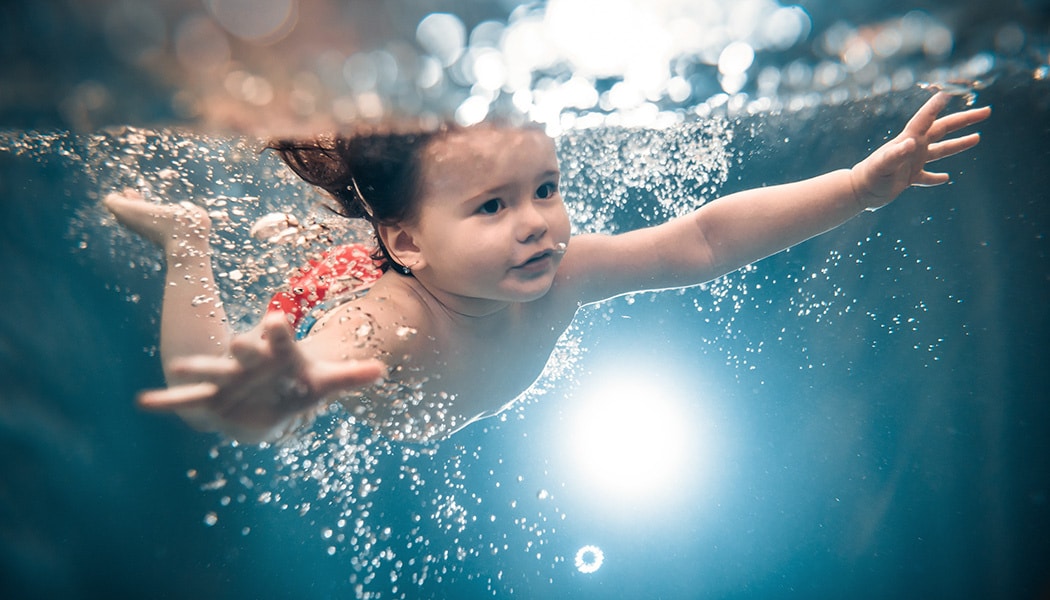
You may have looked at beautiful underwater pictures and wondered if you can take them too. You can! It’s a little more complicated than working on land, but learn a few rules, and you can get started. The special equipment needed for underwater photography isn’t at all expensive. So why not give it a try?
I took most of the photos in this article at a pool during children’s swimming lessons, which I photograph regularly. While this specific pool has its own specific conditions, I’m sure that some or even perhaps all of these tips will help you no matter where you’re taking your underwater pictures.
The Basic Equipment for Underwater Photography
The most basic prerequisite, though you can’t influence it, is clean water. The cleaner it is, the more light will stream in, and the easier your photography will be.
But it will never be like photography on land. So try to get as much light into the water as you can. I personally address this issue using an external flash with a radio trigger, a fast lens, and a high ISO.
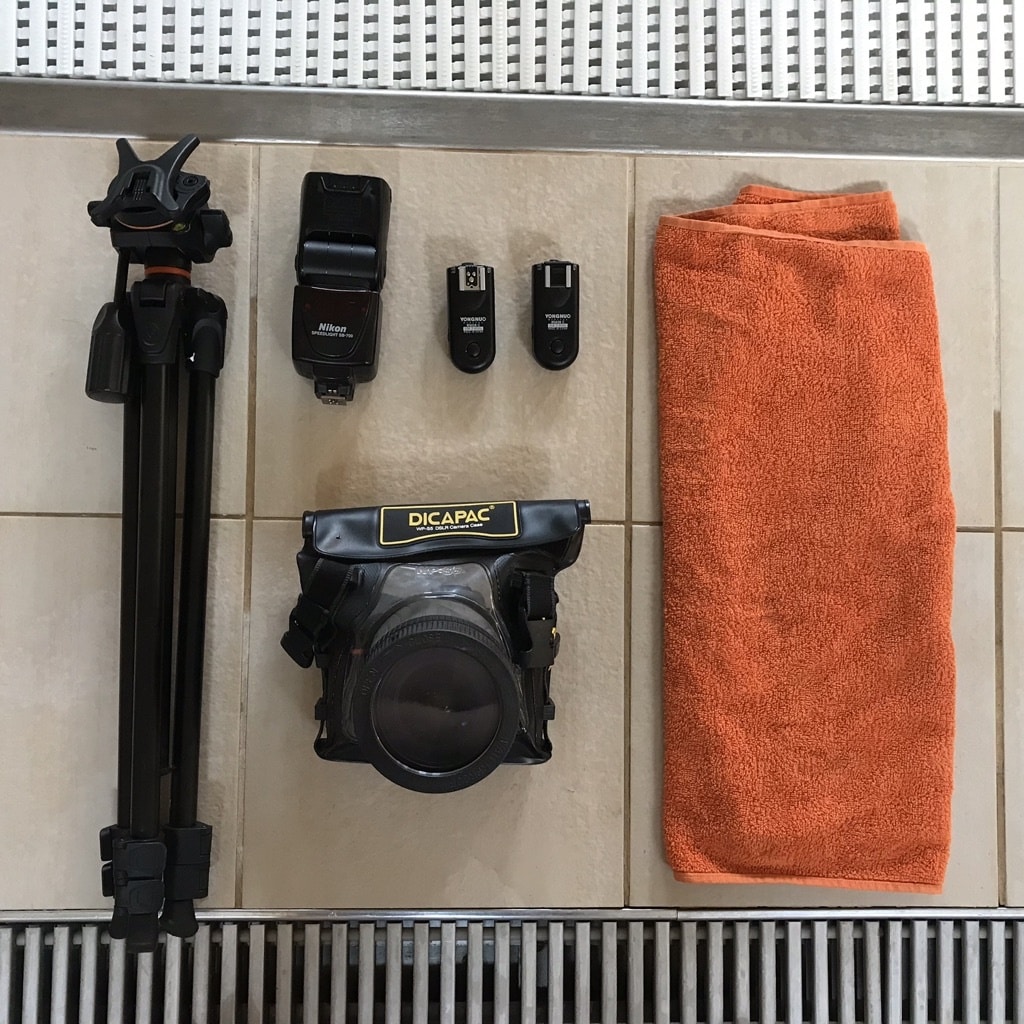
The most important thing is an waterproof camera case. This is what will ensure your camera survives the shoot without damage. From experience I can recommend the Dicapac WP-S5.
And what should you put on it? With lens lengths of 50 mm and more, you’ll generally end up shooting through a lot of water and seeing nothing. That’s why it’s generally better to shoot from closer up. So you definitely want to go for a fast wide-angle lens.
With my Nikon D750, the Sigma 24mm f1.4 Art has worked out best for me in underwater photography. But a Tokina 11-16 f2.8 on an APS-C body, for example, is also fine for underwater work. (It’s what I used to use.)
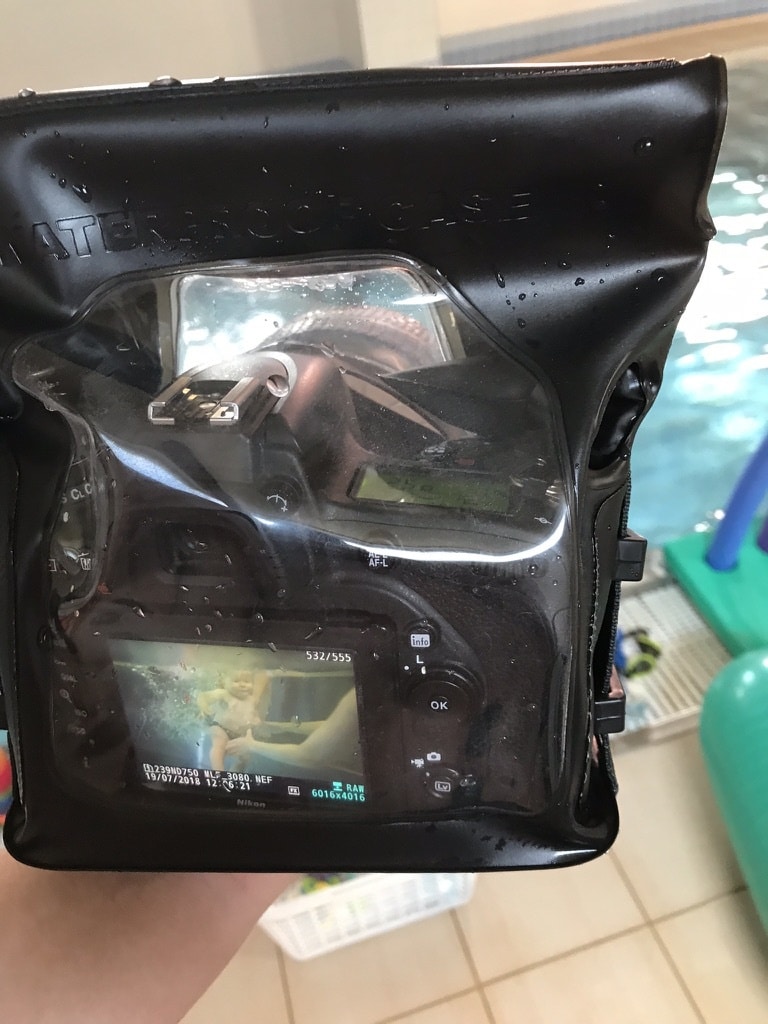
How to Prepare for Underwater Photography
A waterproof camera case is soft, and it has three recesses for your fingers. So you can press most of your camera’s buttons without any problems. On the other hand, pressing and rotating the mode button, for example, takes a lot of patience. That’s why I prefer to set most things up on my camera before putting it in the case.
The external flash is left on land, of course, pointing into the water. Still, wrap it up in cling-film plastic if you can.
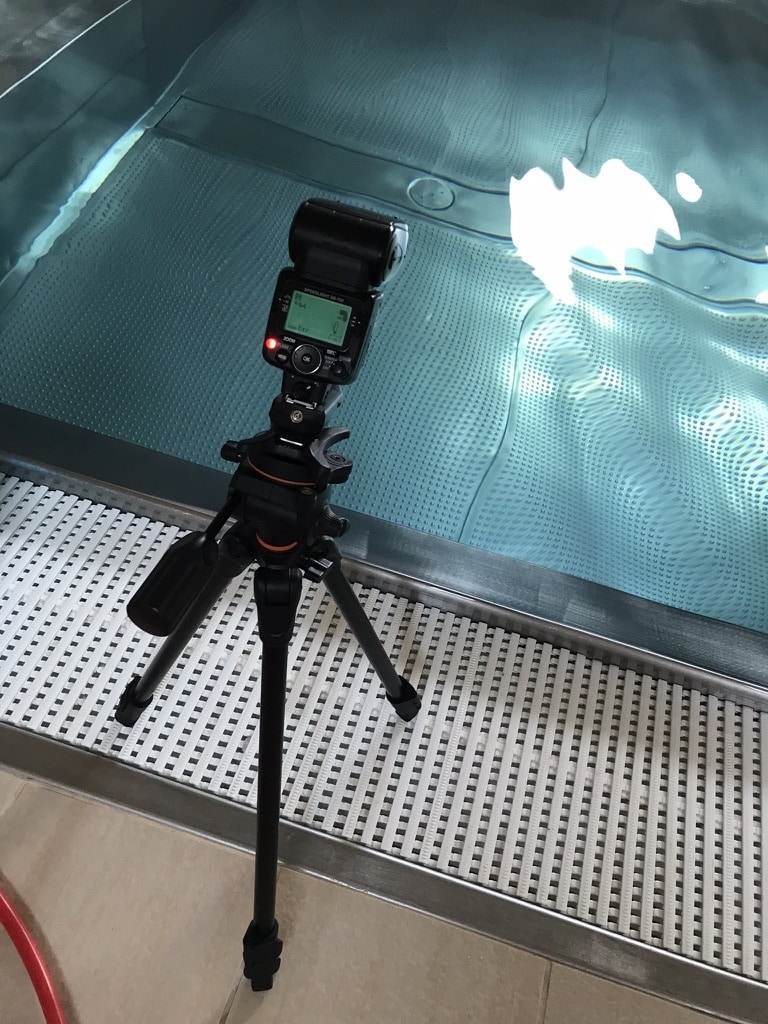
Don’t expect for your flash to illuminate the whole pool significantly. Most of its light is reflected. So it’s more just a minor supplement. But under the water, you’ll be glad for every last photon.
How to Focus Underwater
Focusing underwater isn’t at all simple. Although a waterproof case does enable manual focusing, it’s very inconvenient and nearly unusable. So there’s no real choice but to set your focus to the center (most reliable) spot and try to focus on high-contrast edges so that your camera can handle it. Ideally you want to focus on your subject’s eyes.
By the way, turn the AF Assist lamp straight off. It would only light up the inside of the case; it does more harm than good.
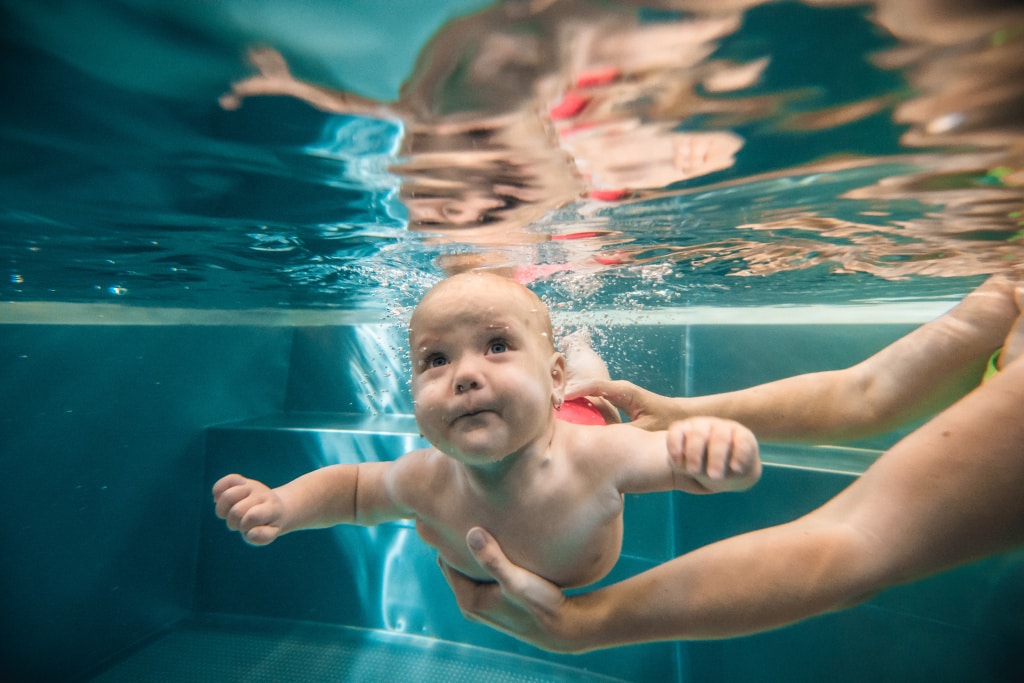
How to Look Into Your Camera
Many people have trouble opening their eyes underwater. And also, looking at things underwater for a long time isn’t really good for your eyes. Fortunately cameras are designed so that the viewfinder is a few centimeters higher than the lens. So you can look into the viewfinder above the water and still shoot underwater.
You’ll just need to take some effort to breathe, because your nose and your mouth will normally be underwater.
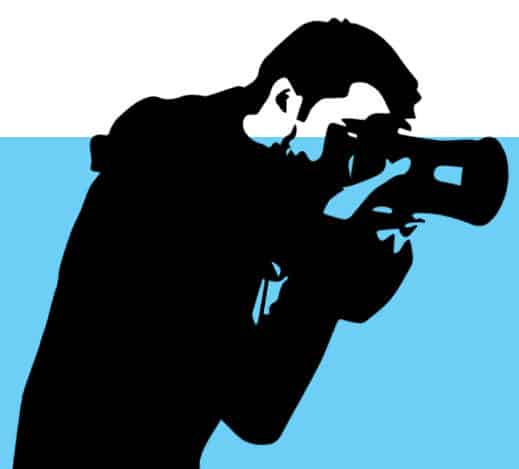
Shooting just under the surface also enables you to use an external flash. That’s because the radio trigger isn’t completely underwater. But if there is other lighting in the pool, you don’t have to worry about a flash.
Shooting in a Pool That Has Lights at the Bottom
Indoor pools often have lights at the bottom. It’s best to take your pictures close to these if they’re there. For outdoor pools, meanwhile, you’ll just have to count on the sun.

Covering up a light source like this can also be interesting. It then illuminates the outlines of what’s covering it, and the bubbles around that.
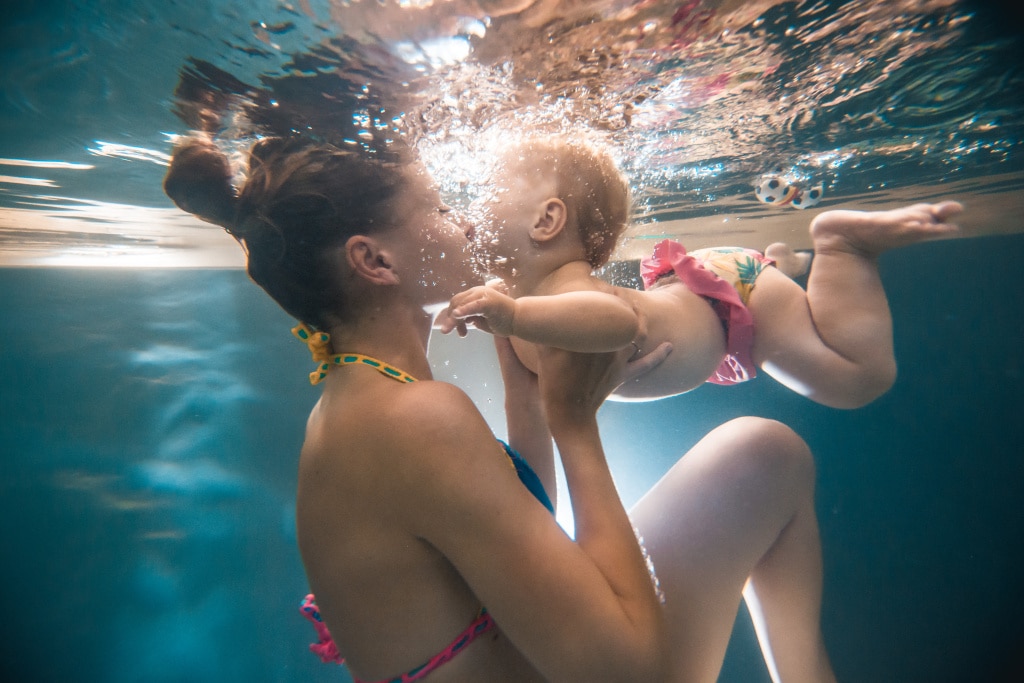
Take Advantage of Bubbles
Air bubbles are a very useful creative element, because they add motion to a photo. At the same time, they can be quite an obstacle. They can often get in the way of your subject’s face, or confuse the auto-focus. Still, it’s worth it to work with them.

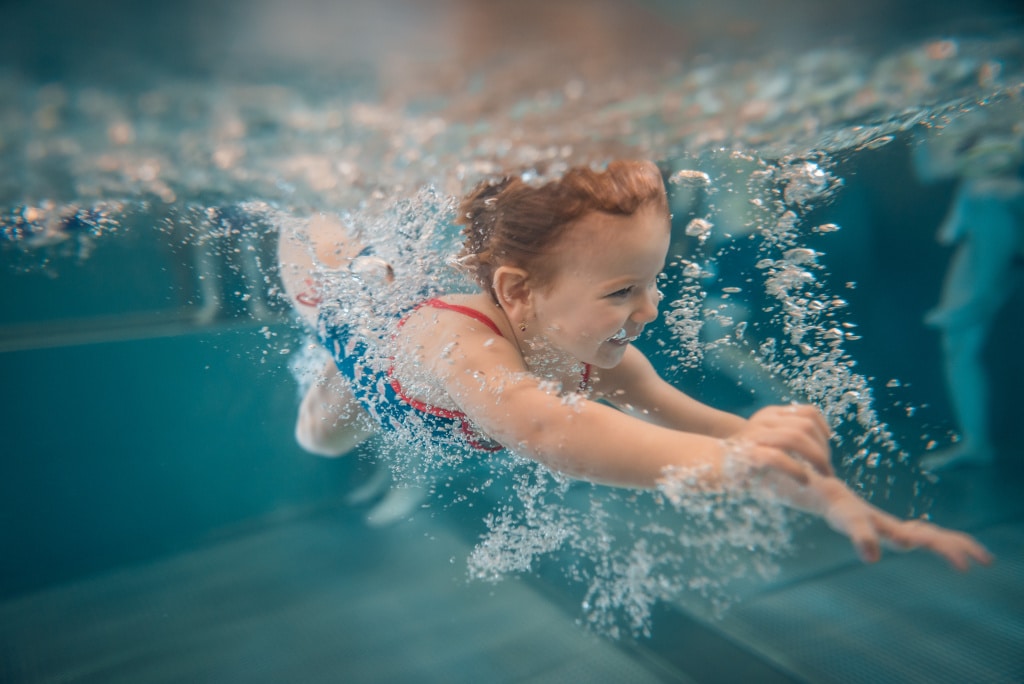
Note: If you’re planning to photograph your kids underwater, then definitely take someone along to help, even if they recently started swimming lessons. Your kids definitely have fun in the water, don’t get me wrong, but even though it seems like they’re swimming alone, it’s really just a second from the instructor dropping them in to Mom pulling them out. And they need that same kind of situation for your shoot.
Sleeping Photos in the Water
Strangely enough, kids can keep their eyes open underwater with no problems. Unlike a lot of adults. For our class’s themed graduation pictures, we took advantage of this to be underwater sleepers.
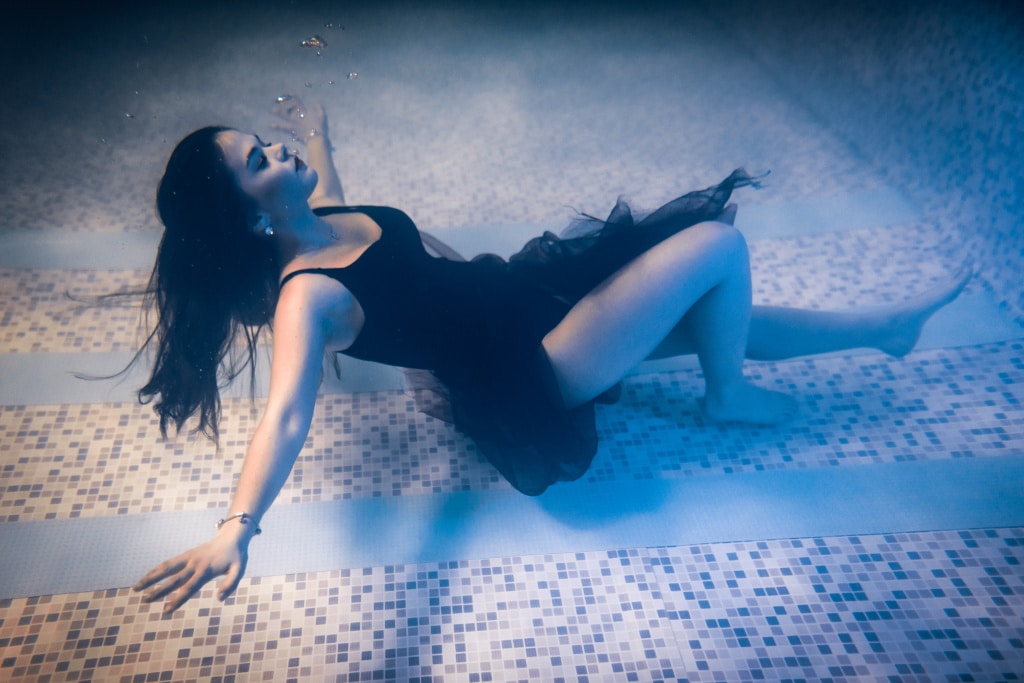
For these pictures we used light clothing, which looks magical underwater.
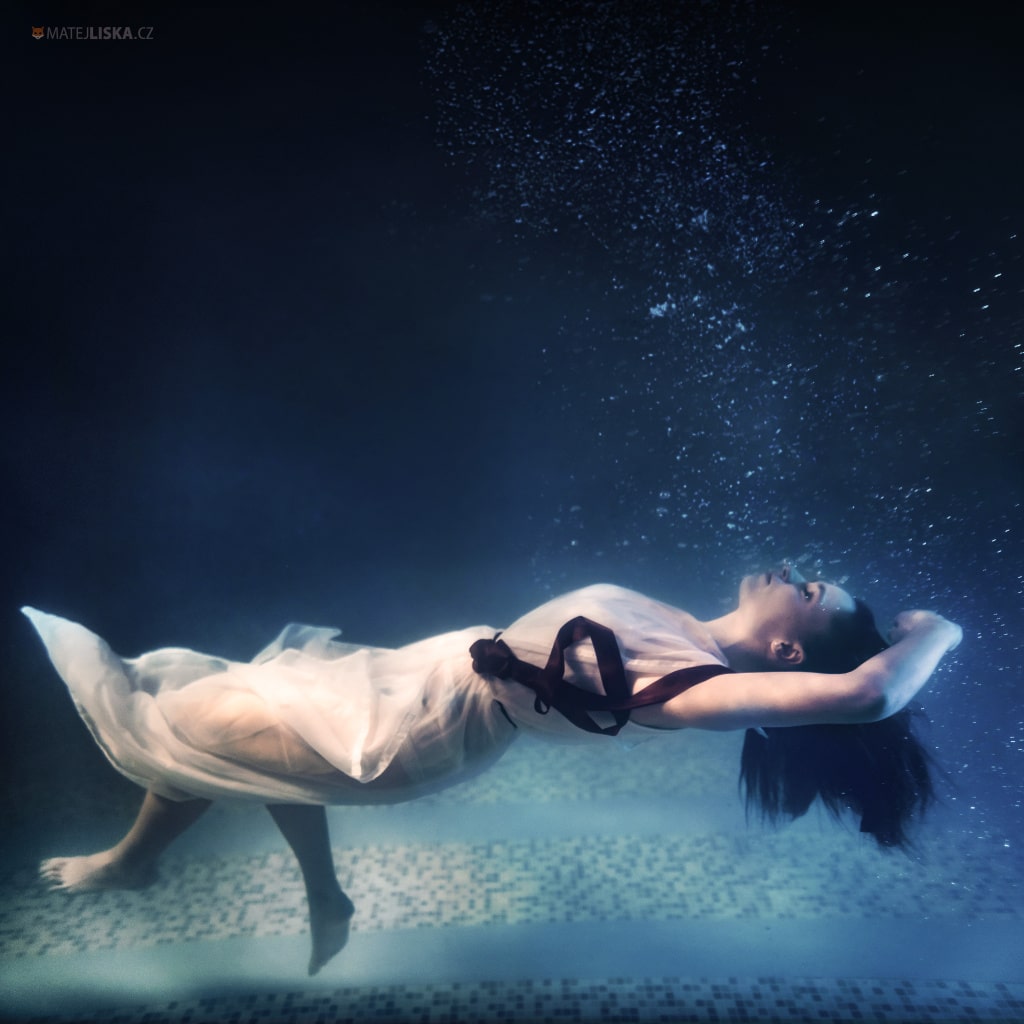
Water Offers a New Creative World
If classical portraits don’t interest you anymore, or you can’t find anything specific that hasn’t already been done to death, try working underwater. In a pool or on a seaside vacation, there are lots of interesting compositions for you to find. And you’ll definitely take pictures underwater that not just anybody has taken before.

There are no comments yet.